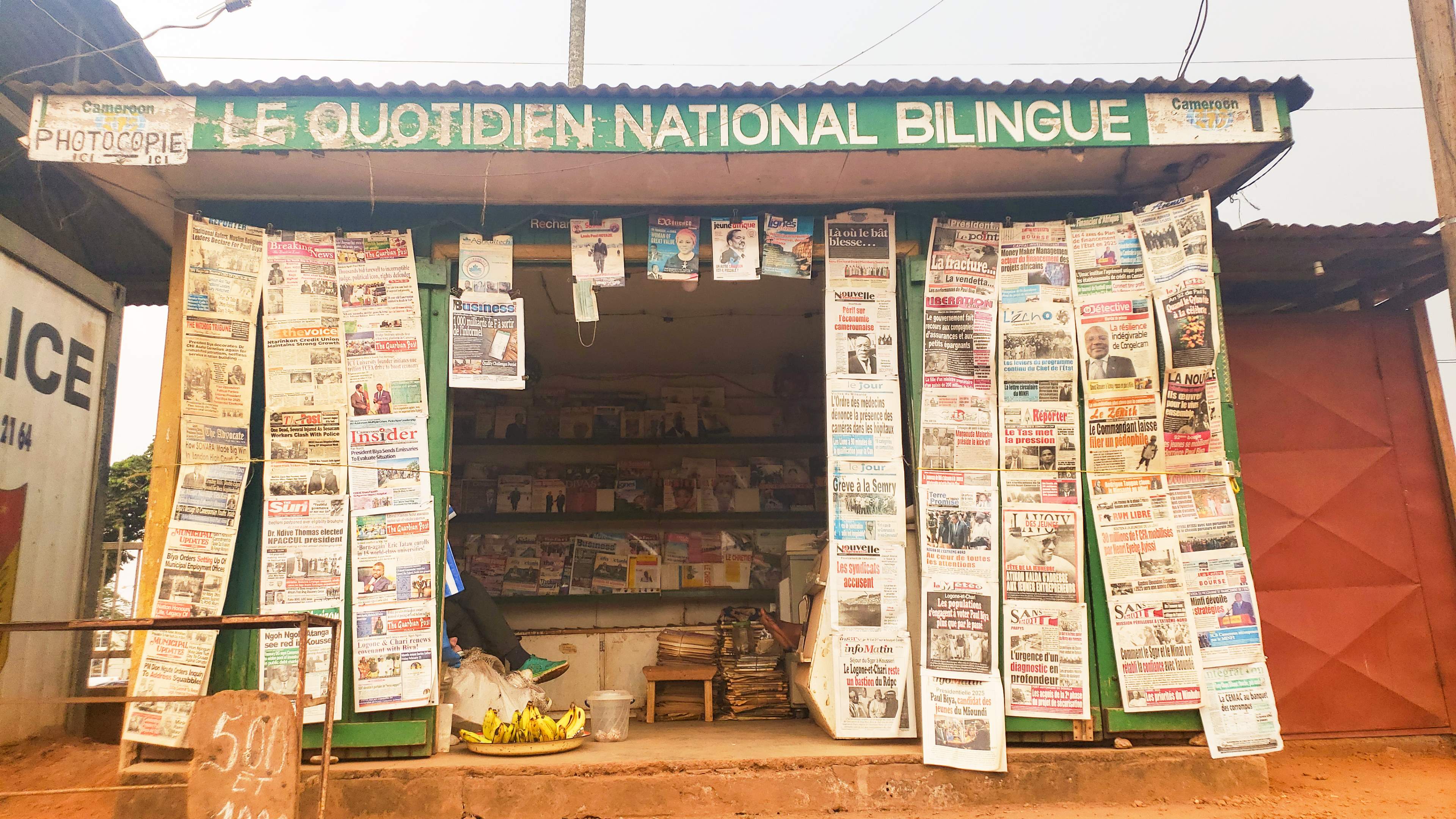As digital transformation reshapes the media landscape, newspapers in Cameroon are navigating unprecedented challenges and opportunities. This evolution compels them to adapt their strategies to engage a new generation of readers amidst fierce online competition, decreasing government subsidies, and a decline in print sales.
Digital transformation has profoundly impacted various industries, with the newspaper sector undergoing the most significant changes. The advent of radio and television accelerated the consumption of news, compressing the traditional 24-hour news cycle into just a few hours or even minutes. As a result, newspaper readership began to decline globally, placing immense pressure on publishers to adapt or face extinction, says Mansour Al Dalaan.
The newspaper industry initially adapted to the challenges posed by radio and television; however, the rise of the internet has had a more harmful impact, leading to the disappearance of many newspaper titles worldwide. Despite these challenges, numerous newspapers have not only managed to survive but are also thriving in an evolving media landscape. So, how are they navigating these challenges?
Digital transformation has significantly impacted [our] print media. To remain relevant in this era, we have embraced digitalization by creating a functional website and establishing an active presence on various social media platforms, such as Facebook, Twitter, and LinkedIn, amongst others.
Navigating the Era of Digital Transformation
“Digital transformation has significantly impacted [our] print media. To remain relevant in this era, we have embraced digitalization by creating a functional website and establishing an active presence on various social media platforms, such as Facebook, Twitter, and LinkedIn, amongst others. This approach allows us to engage with our readers who are active online,” says Doh Bertrand, Managing Editor at The Guardian Post- one of Cameroon’s English dailies.
“When news breaks, we provide updates on our social media channels, giving our readers a teaser of our stories. They can then read the full versions when published in the newspaper. Additionally, readers from any part of the country can access The Guardian Post through our website, where all stories are published. We offer an electronic version of our newspaper as part of our digital transformation. This version can be purchased online through our secure platform, making it accessible to anyone, no matter where they are located. People can also subscribe to the digital edition of the newspaper via email, WhatsApp, or other electronic means. This illustrates how digital transformation has impacted us as a media house – the Guardian Post,” he says.
Digitalization enables newspapers not only to report news but also to engage a new generation of readers.
“Yes, our demographics have shifted a bit. Initially, the belief in the country [Cameroon] was that, if you wanted to hide something from Cameroonians, you should put it in writing or in the newspapers. However, with digitalization, we now have a younger audience that engages with [our] newspapers. While many older individuals still subscribe to and read hard copies of newspapers, there is also a growing number of young people actively reading newspapers online,” says Doh.
“Digitalization has allowed more youth to engage with our social media platforms, follow our pages, and purchase electronic versions of the newspaper to read online. Overall, this shift has increased the number of young people who are involved with our newspaper,” he emphasizes.

Like Doh, Ndi agrees that digitalization has impacted the Newspaper business in Cameroon in varying ways. “The evolution of the newspaper industry in Cameroon amid digital transformation has presented both challenges and opportunities, especially with the rise of digitalization. While sales of traditional newspapers have declined due to a shift towards online consumption, there has been a notable increase in subscriptions to digital formats, such as PDF editions,” says Ndi.
Ndi Eugene Ndi is the publisher of NewsWatch. Over the past 15 years, he has progressed from a journalist and reporter to a staff writer, then to an editor, and now serves as publisher and editor-in-chief.
Challenges Plaguing Today’s Newspapers
Although digital transformation offers opportunities for struggling newspapers, they face significant challenges, including a sharp decline in print advertising and subscriptions, as well as limited growth in readership.
“The challenges we face in running a newspaper are major. With many people having access to news stories online, this has adversely affected the sale of printed versions of [our] newspapers, and you know print media rely heavily on those sales. Additionally, we are encountering stiff competition,” says Doh.
The number of print media outlets in the past was relatively small. However, recent statistics from the National Communication Council indicate that there are now over 760 media organs out of which 232 are print media in the country [ Cameroon]. This has contributed to a congested media market, necessitating the need for effective strategies to maintain relevance as a daily newspaper.
Moreover, the cost of printing materials has skyrocketed due to the ongoing war in Ukraine and Russia. The prices of essential materials like paper and cards have increased dramatically, presenting another significant challenge. Another issue we face is the lack of advertising revenue, which is the primary source of income for print media. Advertisements are not forthcoming, and even when they do arrive, payments are often delayed, particularly from state institutions, ministries, and parastatals.
As a solely English-language newspaper with our fief being Cameroon’s Northwest and Southwest Regions, we have been significantly impacted by the ongoing Anglophone Crisis. Our circulation has decreased due to limited distribution in areas where we previously had a strong presence. In the digital context, internet penetration remains low in many regions of the country. For instance, residents in Mamfe, Idabatou, Ndian, Kolofate, Tuboro, and other areas struggle to access our online content due to the lack of internet connectivity. This limited access, along with issues related to unreliable electricity supply, makes it challenging for people in these regions to read the newspaper digitally. These factors create immediate challenges that we must address, Doh explains.
Ndi, on the other hand, says the difficulties faced by the private newspaper industry in Cameroon are significant. “The demand for printed newspapers has diminished, resulting in decreased sales and a reduction in print runs. Additionally, advertising revenue—the lifeblood of any newspaper—is scarce, as governmental ministries and public institutions often prioritize ads [only] in state-funded newspapers over private outlets. In stark contrast to countries like Gabon, which has increased public aid to private media, Cameroon has maintained its funding levels below 150 million CFA francs (approximately 263,800 USD), with a distribution process that lacks transparency.”
Such a shift [in state fund allocation] could foster a more pluralistic media environment, providing citizens with increased access to diverse perspectives and information.
Restructuring of Newspaper Funding Model
In Cameroon’s current media landscape, state-owned entities receive substantial funding to support media outlets, raising concerns about the fair distribution of these resources. “For example, the state-owned bilingual daily newspaper, Cameroon Tribune, is allocated one billion francs (approximately $1.76 million USD) annually by the government to publish ‘appels d’offre’ or public calls to tender. Although this publication is believed to have a nationwide circulation, accessibility is often an issue, as it can typically be found only in strategic locations, such as the offices of Sub-Divisional Officers (SDOs). In contrast, various local private newspapers operate in different regions, serving their communities but frequently lacking the financial support necessary to thrive and reach broader audiences,” notes Ndi.
Faced with the current challenges, he believes there has never been a more urgent need to restructure the funding model than now. “A proposed restructuring of this funding model could significantly improve the media landscape. If the government were to allocate half of the fund- 500 million francs (approximately $800,000 USD)- to the state-owned newspaper and direct an equal amount to support private media for publishing tenders, it would empower these local outlets and broaden public access to essential information,” he states.
“Such a shift could foster a more pluralistic media environment, providing citizens with increased access to diverse perspectives and information. By enhancing financial support for private media, the government could multiply the impact of public aid and improve overall transparency in the tendering process. In a climate where media plays a critical role in democracy and accountability, this proposal merits serious consideration,” he emphasizes.
We should leverage digitalization to set ourselves apart in the current media landscape.
Reinventing the Wheel
Despite the challenges facing the print industry, publishers and print journalists are optimistic that newspapers will continue to thrive. For their survival to be ensured, “We [must] should leverage digitalization to set ourselves apart in the current media landscape. The rise of citizen journalists—individuals who may not have formal training but use smartphones and internet access to share news—poses a challenge to traditional journalism. It's essential that we, as trained professionals, find ways to utilize the advantages of digitalization to distinguish ourselves from casual content creators or "Facebookers" who are increasingly infiltrating the media sphere,” says Doh.
Many people who previously wouldn’t have been considered journalists are now claiming that title simply because they have the means to publish. Therefore, we must focus on how our work differs from this crowd. It’s crucial not to rush into publishing information without proper investigation. Instead, we should prioritize the dissemination of verified information and provide a deeper analysis of trending news. This approach can help us remain relevant in a rapidly changing environment. Finally, media entrepreneurs must embrace digitalization. Every media outlet should have a blog or website in this digital age. We must fully utilize the internet and the opportunities it presents, he says.
Social media has proven to be an effective tool for increasing visibility and engagement.
“A crucial factor in adapting to these changes is ensuring the production of attractive and relevant content. To bridge the gap left by decreasing hard copy sales, many publishers are actively working to attract more subscribers to their PDF versions” says Ndi.
He believes that integrating social media into the newspaper business is a key strategy for survival.
“Social media has proven to be an effective tool for increasing visibility and engagement. By sharing the front page of their publications across social media platforms, ‘NewsWatch’ can reach interested readers and maintain public awareness of their publishing schedule. Although readership for print editions has significantly declined, there is a silver lining: subscriptions for digital editions have been on the rise. The publication's ability to connect directly with subscribers through platforms like WhatsApp allows them to distribute their PDF versions efficiently and keep their audience engaged.”
By and large, the future of newspapers presents a multifaceted challenge influenced by a range of factors. While traditional print newspapers are likely to encounter significant obstacles in the coming years, nonetheless, there are several reasons they may continue to exist in some capacity. Key strategies for survival include embracing digital transformation, identifying niche markets, upholding high standards of journalism, adapting subscription models, and enhancing community engagement. Each of these elements plays a crucial role in navigating the evolving landscape of news media.














































